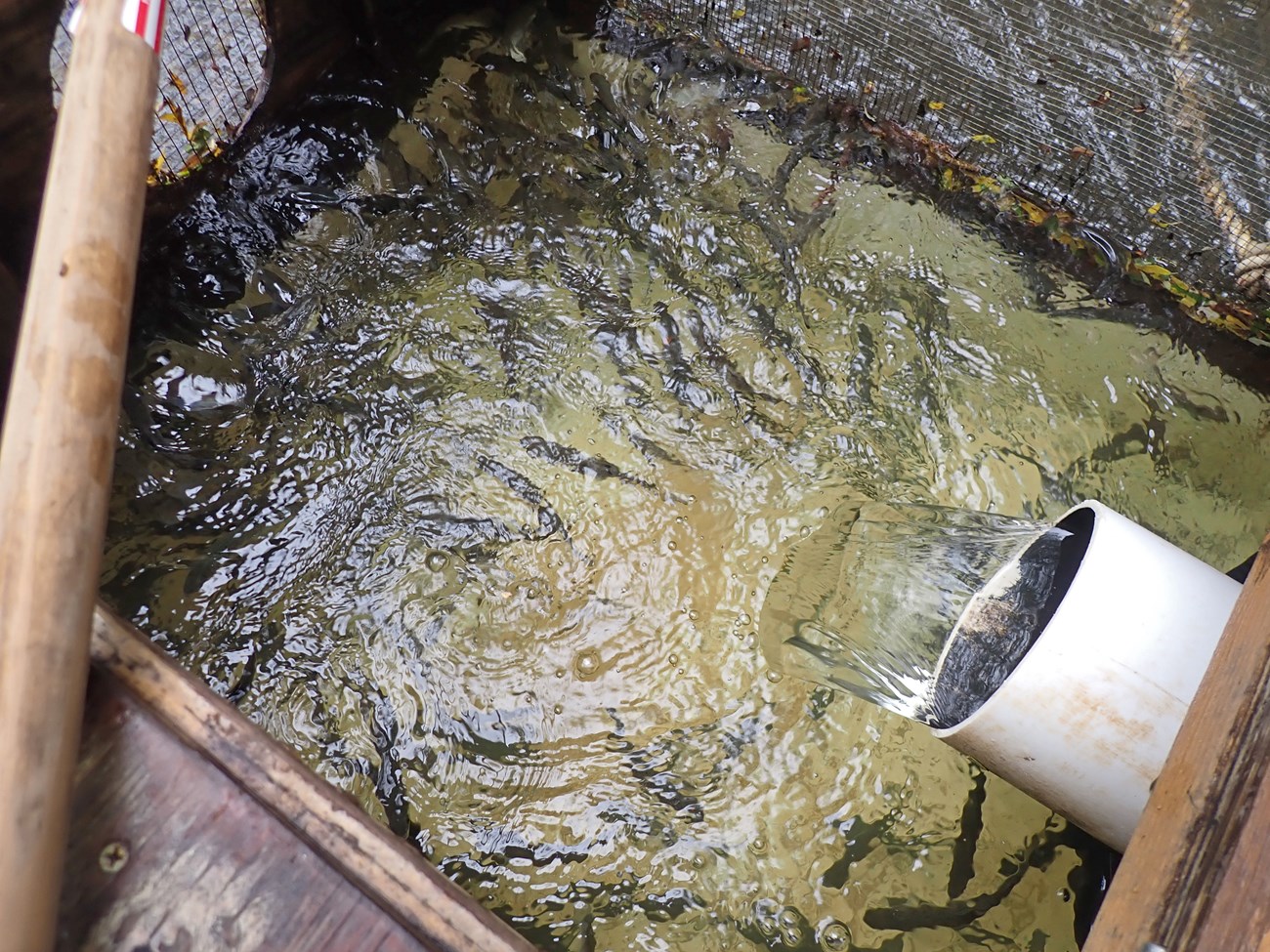Last updated: July 27, 2023
Article
Spring 2023 a Record Breaking Smolt Season
By Watershed Stewards Program Corpsmember Catherine Masatani, San Francisco Bay Area Network Salmonid Monitoring Program

Point Reyes National Seashore Association / Tara Blake
Each year, the coho salmon in Olema and Redwood Creeks migrate to the Pacific Ocean during the spring. Salmon and anadromous species of trout go through a process called smoltification which allows them to smoothly transition from freshwater to saltwater. Their color, parr markings, and even body shape change during this important process. As part of SFAN’s salmonid monitoring program, we construct downstream migrant traps in both streams to determine how many coho survived the freshwater life stage to migrate to the ocean.
While our crew may have missed fish movement in March due to storms, over 11,000 coho smolts were captured in the downstream migrant traps this season. This has definitely been a promising smolt trapping season, with several high fish-count days and other non-salmonid surprises in the trap, such as California freshwater shrimp, western pond turtles, and a California giant salamander.

NPS / Watershed Stewards Program Corpsmember Elizabeth Bear
Before this, the highest number of coho smolts captured in a single season (spanning roughly 12 weeks) was about 2,000 fish in 2014. In the eight weeks that our trap was installed for the 2023, we captured over 9,800 coho smolts in Olema Creek and over 1,600 in Redwood Creek. Olema Creek has proven to be particularly productive this year, with several days of smolt counts higher than 500. In fact, one day we were stunned to capture a record-breaking 1,100 coho smolts on Olema Creek.

NPS / Mike Reichmuth
Typically, most coho smolts migrate out of the streams by the end of May and we begin removing our smolt traps. However, with so many fish in both Olema and Redwood Creeks this year, we decided to operate smolt traps through Memorial Day weekend and into June. Numbers dropped off substantially during the last week of trapping, and there are likely a few stragglers that will migrate out over the coming weeks. Stay tuned for winter 2024-2025, when these fish will be back to spawn—hopefully in high abundance!
For more information
- San Francisco Bay Area Network Salmonid Monitoring webpage
- Pacific Coast Science & Learning Center Coho & Steelhead webpage
- Contact Fishery Biologist Michael Reichmuth
See more from the Bay Area Nature & Science Blog
